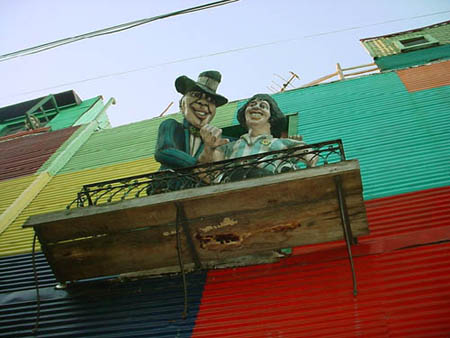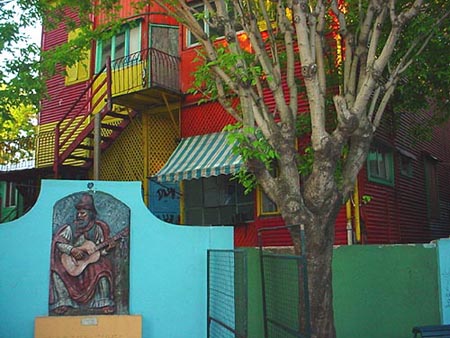LA BOCA
PLACEText: Gisella Lifchitz
Tango, which was perceived as a marginal musical gender, found in conventillos a place to spread its roots. Even though, tango was born as a music for brothels, not suitable for those decent workers that inhabit the conventillos. Nowadays tango has crossed every frontier and it became a close friend of La Boca.

You can see many things on a Sunday in La Boca, a synthetically unique neighborhood. The classic family reunion around the table at midday, the “asado” with typical pampas meat, football on TV, lots of painters everywhere portraying each other in front of an imaginary view, the occasional tourists trying to see it all, our popular art on paper, on wooden houses, on the stoned pavement.
La Boca appears to be all of it. And what’s best: people actually live there.

While I waited for a lady to leave her house before taking a picture of it, I realized La Boca actually exists as a place where people live. The colorful houses we see as an object are inhabited by people. Some of the houses haven’t even changed a bit from the old days. When one of the neighbors opens the door, we are able to see the long corridor full of closed doors which have inherited who knows what mystery.
If we listen carefully, we can even hear the family gathered around their Sunday table, prepared to eat lunch in front of the TV. Maybe they don’t understand the purpose of the pictures and sightseeing routines. And perhaps that is why they are some of the most genuine example of our culture. After all, they are a hundred per cent “portenios”.
Text: Gisella Lifchitz
Photos: Gisella Lifchitz





